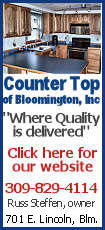|
 Industry analysts say the improved offerings are much better than the chintzy small cars of the past, but Detroit still has a long way to go to unseat the Toyota Corolla and Honda Civic, which together control almost 30 percent of the small car market. Foreign nameplates have 76 percent of the U.S. small car market. Industry analysts say the improved offerings are much better than the chintzy small cars of the past, but Detroit still has a long way to go to unseat the Toyota Corolla and Honda Civic, which together control almost 30 percent of the small car market. Foreign nameplates have 76 percent of the U.S. small car market. "It's a segment that we've been out of, so we need to have really good products in it," Ford Motor Co. Chief Executive Alan Mulally told The Associated Press in a recent interview.
Mulally, who just began his second year leading Ford after being hired away from aviation giant Boeing Co., said his five adult children are a perfect example of Ford's challenges in the compact market.
"We missed a whole generation of Ford products," he said. "We knew the trucks and the SUVs, No. 1 in the world, but they grew up with Civics and Accords."

His children, he said, love the new Ford vehicles, but the company has some huge challenges getting people to believe it's making quality cars again.
"The thing is consideration and awareness that we even have them," Mulally said.
Ford and GM research shows that small-car buyers will no longer tolerate flimsy seats, cheap plastic dashboards, noisy engines and bumpy rides. They also want sleek body styles and performance comparable to larger cars
-- all in a fuel-efficient package.
"People who go into a small car want expressive design and they want a level of refinement in the interior," said Jill Lajdziak, Saturn general manager. "We've got to make sure that our small cars are delivering what they want. They don't want to compromise."
The Focus, a refined version of the old car that debuted in 1999, is quieter, faster and more efficient than its predecessor. It and the Astra have interiors that rival larger luxury cars, and the Focus is the first car to get "Sync," a Microsoft Corp. system that allows people to control phones and personal music players with voice commands.
But the coming generation of Detroit's small cars still will have a tough time breaking into the market controlled by the Civic and Corolla.
The new Focus, while vastly improved, looks like the tired old model, said Erich Merkle, vice president of auto industry forecasting for consulting company IRN Inc. in Grand Rapids.
[to top of second column]

 |
 "There's a tremendous level of refinement in the new Focus," Merkle said. "I just don't think the sheet metal does it justice. It doesn't look different enough from the predecessor to get people to see that it's different from the other car."
The Astra, essentially the same car as Europe's successful Opel Astra, will come in three- and five-door models in the U.S. It probably will be priced as a premium small car and its volume will be limited here, so it won't cut into Toyota Motor Corp. and Honda Motor Co. sales that much, Merkle said.
While the domestics race to put out better compacts, Toyota isn't standing still. A new version of the top-selling Corolla is coming early next year.
Toyota won't comment on future products, but Ryan Miller, its small car product manager, said the company expects to keep its share of the market with the new Corolla by building on its heritage of quality and reliability.
The domestics' new offerings will have increased safety features such as six standard air bags, something that Toyota is watching, he said.
"There's always areas for improvement," Miller said. "We have reviewed that and will be addressing market needs, we hope, with the next generation Corolla."

Both Ford and GM see the small car market growing so much that they plan to have a wide array of cars and small crossover vehicles similar to what Toyota now offers. GM even has plans for a rear-wheel-drive small Cadillac to compete with BMW's 3-series.
Mulally said Ford likely will have a strategy similar to Toyota, which now has multiple small car entries including its funky Scion brand.
A separate brand may not be in the offing, but Ford intends to be a leader as many manufacturers bring successful small models to the U.S. from Europe and other countries.
"We have been really focusing on dynamite, stylish, neat, comfortable, well-crafted smaller cars," Mulally said. "With the fuel prices staying up in the United States and the changing tastes with global warming and energy security, then all of a sudden, I think we're going to start to come together. You're going to see all of the neatness of those smaller cars that are very fuel efficient. We're going to see that in the United States, and I want to be on the leading edge of that."
[Associated Press; by Tom Krisher]
Copyright 2007 The Associated Press. All rights reserved. This
material may not be published, broadcast, rewritten or
redistributed. |